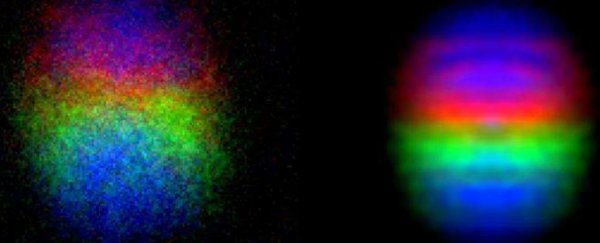Of the many 'white whales' that theoretical physicists are pursuing, the elusive magnetic monopole - a magnetic with only one pole - is one of the most confounding.
Compared to the Higgs boson in terms of its potential impact on modern physics, the magnetic monopole has been on scientists' minds for even longer. And now our best shot at finding it just got weird - two phenomena that resemble the magnetic monopole have become one.
If you're unfamiliar with the magnetic monopole, it's a hypothetical particle that's long been predicted by quantum physics, but no one has ever been able to prove that it exists.
And that's a problem - for some scientists, at least - because the apparent lack of magnetic monopoles is messing with our understanding of the Universe, and how symmetrical it actually is.
There are four fundamental forces that govern our Universe: gravitational force, electromagnetic force, and the strong and weak nuclear forces.
Electricity and magnetism combined are responsible for the electromagnetic force, but they're not as similar as their perfect pairing might have you believe.
Everyone knows that a magnet has a north and a south pole, but what's weird about this is that you could cut a magnet in half, each piece would still have those two separate poles.
You could cut that magnet in half and in half again until you've broken it down to an atomic scale, and you'd still always have two poles (dipole) instead of one (monopole).
To date, no one has ever found a magnetic monopole in nature - we've never found a magnet that is truly north or truly south. And that's strange because electric monopoles - commonly referred to as electric charges - are ubiquitous.
There's also the fact that fundamental equations that describe the nature of electromagnetism are symmetrical in how they treat electricity and magnetism, so if the sum of parts is symmetrical, how can the parts be asymmetrical?
 Left: Magnetic diplole. Right: Magnetic monopole. Credit: Maschen/Wikimedia
Left: Magnetic diplole. Right: Magnetic monopole. Credit: Maschen/Wikimedia
"Electric monopoles exist in the form of particles that have a positive or negative electric charge, such as protons or electrons," Australian particle physicist T'Mir Danger Julius from Swinburne University of Technology explains for The Conversation.
"While we can find electric monopoles in the form of charged particles, we have never observed magnetic monopoles."
Back in the 1930s, theoretical physicist Paul Dirac proposed that a magnetic monopole particle could exist in nature, and it took scientists more than 80 years to create an artificial one in the lab.
In 2014, a team from Amherst College in Massachusetts and Aalto University in Finland announced that they'd replicated what Dirac had predicted in the lab - an artificially synthesised Dirac monopole.
It was a big achievement, but while it proved that such a particle could technically exist in the Universe, we're still no closer to finding out if it does. The team referred to their Dirac monopole as an "analogue" of a magnetic monopole, meaning it's similar, but not the real deal.
The following year, the team found another magnetic monopole analogue - a quantum monopole.
The team says they found that each analogue displays a different quality of the hypothetical magnetic monopole:
"Whereas the Dirac monopole experiment simulates the motion of a charged particle in the vicinity of a monopolar magnetic field, the quantum monopole has a point-like structure in its own field resembling that of the magnetic monopole particle itself."
Fast-forward to now, and the same researchers have been messing around with their analogues, and found something unexpected - one can spontaneously transform into the other in less than a second.
The experiment is pretty technical, but in basic terms, the team used an extremely dilute gas of rubidium atoms chilled near absolute zero, at which point it formed a Bose-Einstein condensate - a state of matter where atoms behave like waves.
In this non-magnetised state, the researchers created their quantum monopole.
"The quantum monopole is a so-called topological point defect, that is, a single point in space surrounded by a structure in the non-magnetised state of the condensate that cannot be removed by continuous reshaping," the team explains.
They then gradually started to magnetise the system to see what would happen once it transitioned to a magnetised state, and found that not only did the quantum monopole get destroyed, it gave birth to a Dirac monopole in the process.
You can see them below, on the left, is the quantum monopole, and on the right, the Dirac monopole. The colours represent the direction of the internal magnetic state of the atoms, and the brightness corresponds to particle density:
 Tuomas Ollikainen
Tuomas Ollikainen
"I was jumping in the air when I saw for the first time that we get a Dirac monopole from the decay," says Mikko Möttönen from Aalto University.
"This discovery nicely ties together the monopoles we have been producing over the years."
What this means for their search for a real magnetic monopole is not yet clear, but now the researchers have a tantalising lead for where the two types of analogues could meet in the middle to resemble a true magnetic monopole even more closely.
Like the elusive dark matter, if we could find a magnetic monopole, it would open the door to a whole new world of physics. And these researchers are closer than anyone's ever gotten to figuring out how to close some big gaps in our understanding of the Universe.
The research has been published in Physical Review X.
